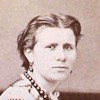

|
6. The method : The Touch |

|
Woman recognized as a composer, Marie Jaëll was inevitably of avant-garde. Her reputation as concert performer was not to be made any more, and she did not hesitate, in this field also, to innovate. She was the first one in France to give, from 1892 to 1894, the integral of the Sonatas of Beethoven, of the work of Schumann and of Liszt. To the apogee of success, she however will cease playing in public and composing to devote herself entirely to educational researches.
Since 1868, when she heard it for the first time, the extraordinary play of Liszt appeared to her as a revelation which will challenge her unceasingly during all her life. It was certainly the basic motivation of her research. How to reproduce and transmit this so beautiful musical quality ? The historical and scientific context could only stimulate the spirit of Marie Jaëll, which was in perpetual search. The making of piano was deeply modified by the technological inventions of the industrial era, in particular by Sebastien Erard. Sound esthetics and digital technics of the pianists were to be revised. Physiology was becoming a recognized science ; Claude Bernard published his Introduction to experimental medicine in 1865. Studies on the nervous system and the brain were making decisive progress : map of the zones of the brain, study of the reflexes (Pavlov). The French pedagogue Alfred Binet (1857-1911) published in 1894 his Introduction to experimental Psychology. Marie Jaëll, never satisfied with her knowledge, could not remain insensitive to this context. In an apparently unexpected way, she started by studying the physiology of the hand to determine the bases of a new pedagogy of the piano. According to this completely original approach, science was at the service of art. She proposed a pedagogy which was the consequence of her observations and experiments, of her knowledge of the brain and of the nervous system. Unlike most of the methods of the time, resting mainly on the acquisition of automatisms learned at any costs by the pupil, Marie Jaëll proposed a « new system of studies » based on the real possibilities of training of the brain and of the nervous system. For her, it was necessary to teach the good gesture generating the beautiful musical sonority by the thought movement and the development of the tactile, auditive and visual sensitivity. This approach, which was a true copernician revolution, was not always understood in her time. Paradoxically, it seems to us so familiar that we do not perceive its innovative and modern character. She gave a decisive orientation to the teaching of music, going in the direction of modern active pedagogies. Marie Jaëll published in 1894 a first version of her method which was entitled The Touch. It was translated into German by a pupil who became famous later on, Albert Schweitzer. |








